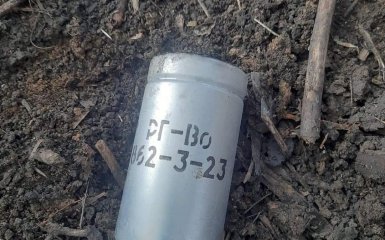In April, the Russian military used 444 munitions containing hazardous chemicals against Ukrainian soldiers.
Russia uses banned chemical weapons against the Ukrainian Army
The main method of using chemical munitions against the Ukrainian Defence Forces is the dropping of Kh-51s from unmanned aerial vehicles.
This was reported by the General Staff of the Armed Forces of Ukraine (AFU).
Over the past month, the mobile groups of the grouping of support forces and means and other units of the Defence Forces recorded 444 cases of the enemy's use of ammunition containing hazardous chemicals, which is 71 cases more than in the previous period.
A total of 1,891 cases of use of hazardous chemicals were recorded between February 2023 and April 2024.
As explained by the General Staff, the Russians continue to use munitions containing hazardous chemicals, and thus violate the Convention on the Prohibition of the Development, Production, Stockpiling, and Use of Chemical Weapons and on Their Destruction, as well as the laws and customs of warfare.
Russian Army scaling up the use of weapons with poisonous substances against the AFU
The use of hazardous chemicals by the Russian army has become systematic, and the trend is only growing.
The General Staff noted that "the main method of delivery is the use of unmanned aerial vehicles, mainly with the discharge of Kh-51 and RG-VO grenades".
In total, between February 2023 and March 2024, the Ukrainian Defence Forces recorded 1412 cases of the use of ammunition containing hazardous chemicals by Russia.
The adversary continues to use munitions containing hazardous chemicals, which violates the Convention on the Prohibition of the Development, Production, Stockpiling, and Use of Chemical Weapons and on Their Destruction, as well as the laws and customs of warfare.
More on the topic
- Category
- Ukraine
- Publication date
- Додати до обраного


